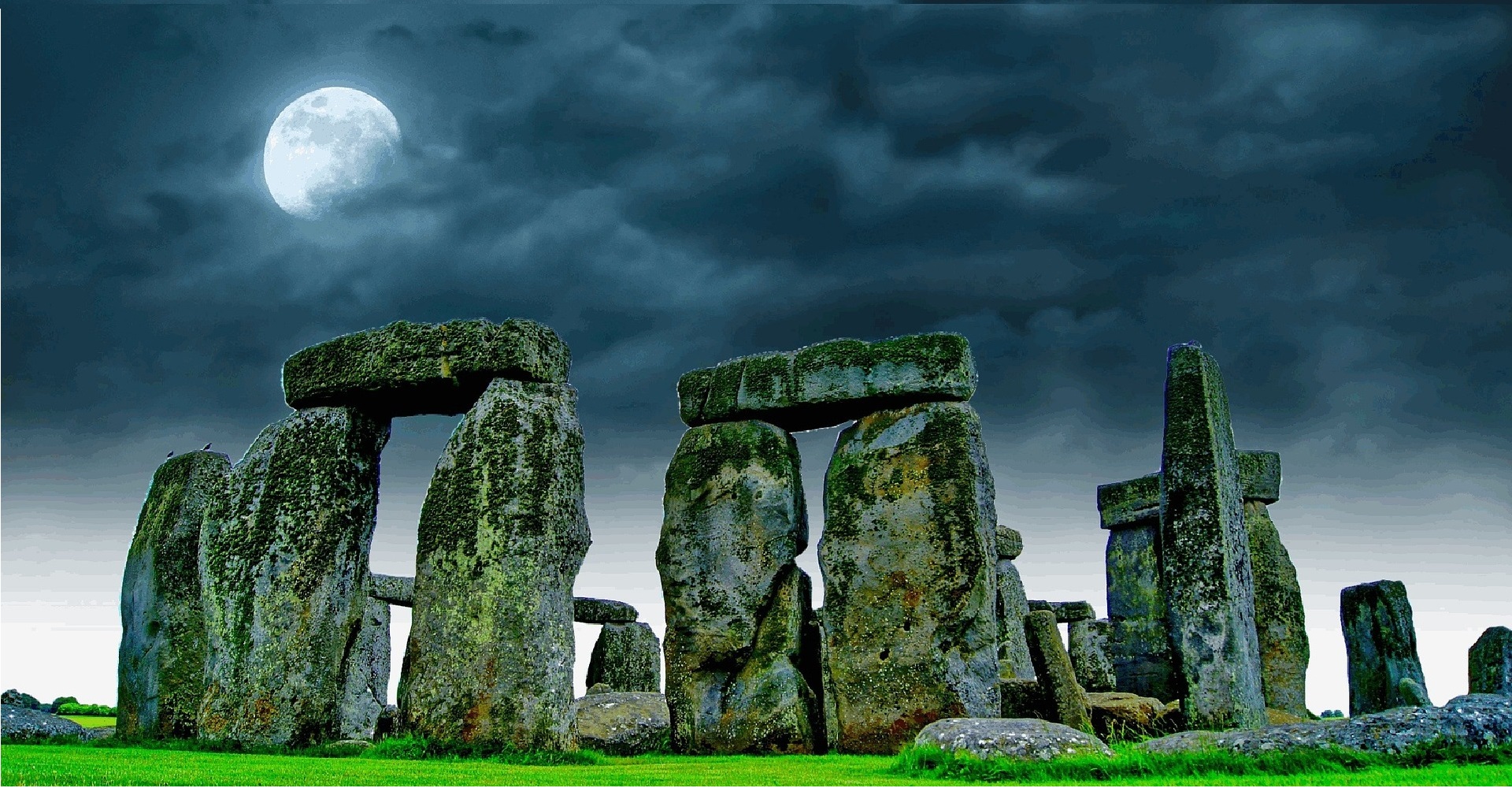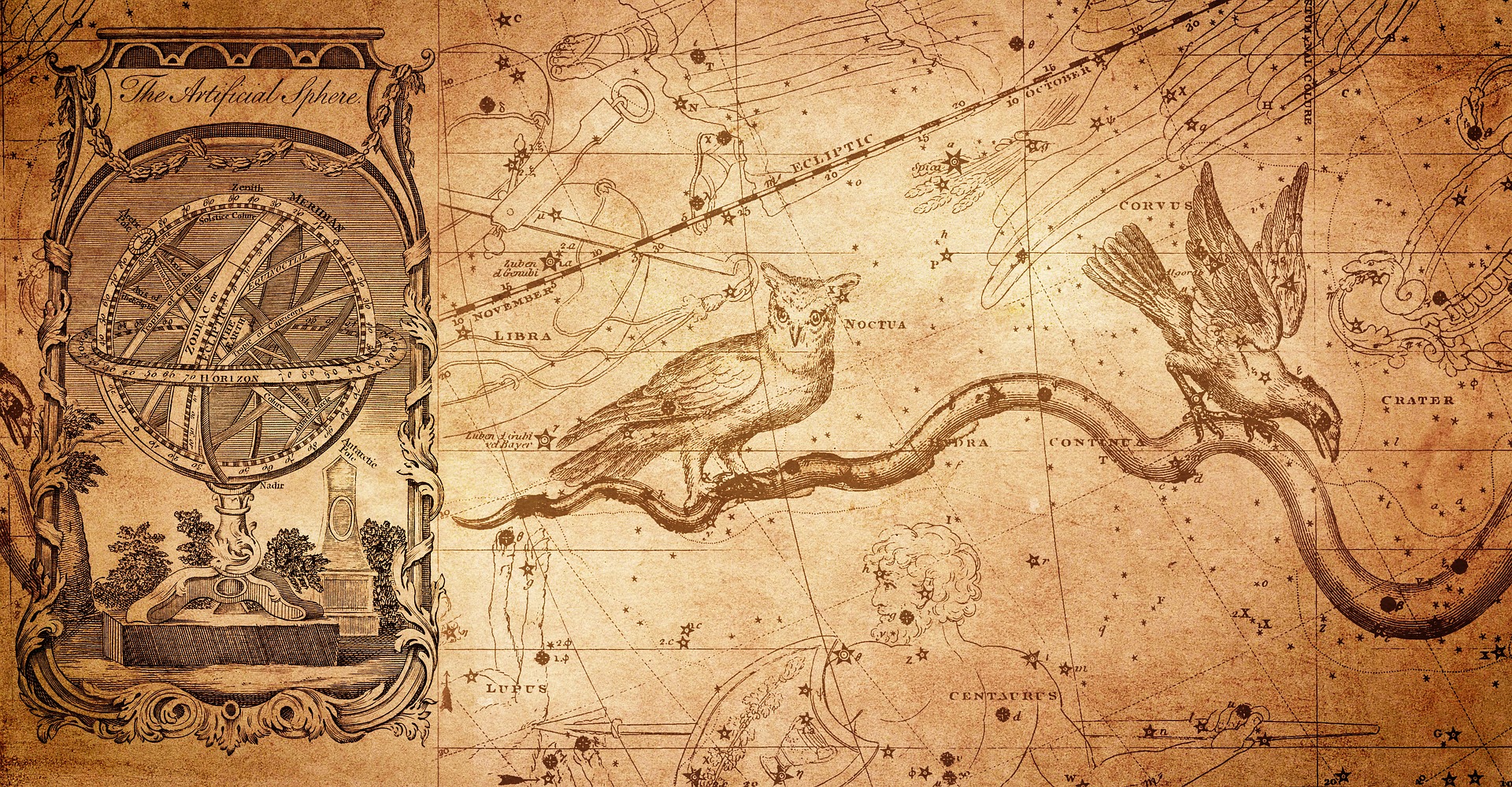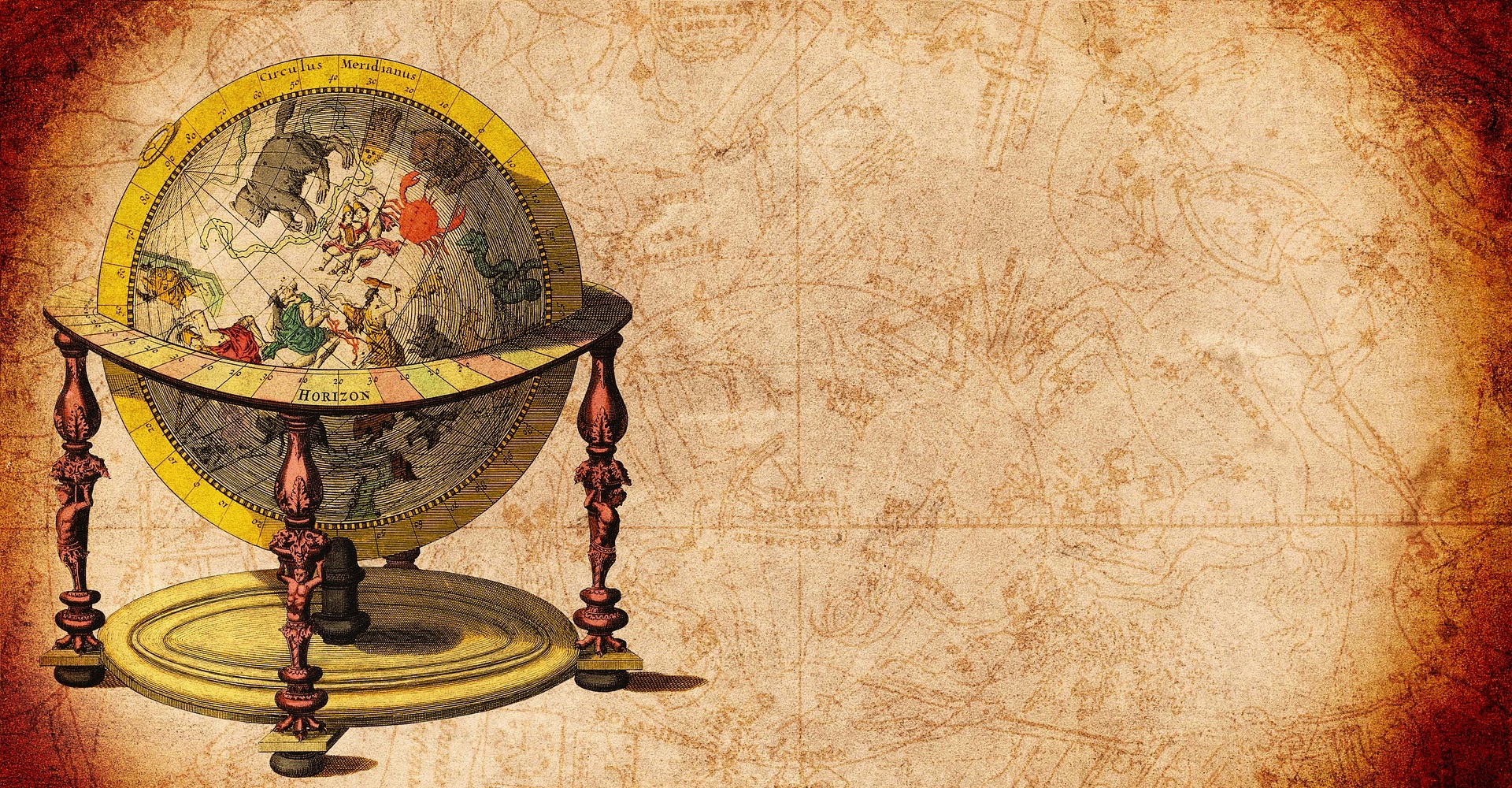Passion of the People – 1.1.5
Prehistoric Cultures and Mankind’s First Star Witnesses
Based on experience and tools, ancient cultures utilized the stars to figure out when to plant and harvest their crops, they named the constellations and told stories about heroes and gods, animals and mythological creatures represented in the stars. These stories about the stars were part of oral traditions with much more implications beyond the entertaining elements which they surely had. The stories preserved ancient cultures by transferring knowledge from one generation to the next.
As early as 5000 years ago, some of the first astronomers observed changes in the Sun and Moon. They noticed patterns in the Sun’s rising and setting and in the shape and position of the Moon on any given evening. They often built shrines or henges that told them of key astrological moments such as the winter and summer solstices or the spring and fall equinoxes. This helped them to know when to plant crops after frosts and when to harvest them before winter descended. Henges exist e.g. all over the United Kingdom, the most famous being Stonehenge. Henges can be found in other European regions as well e.g. as a circular ditch, a circular mound, or consist of stones and timbers to define the circle.
Ancient sailors used the stars to help guide them while they were at sea. The Phoenicians looked to the Sun’s movement across the heavens to tell them their direction. Early astronomers realized that some constellations, such as the Big Dipper, were only seen in the northern part of the sky. The location of the North Star – Polaris – helped travellers figure out the direction they needed to reach their destination. As part of the Ursus Minor constellation, the lesser bear, Polaris sits above the northern planetary pole without moving too much, making it an excellent navigational tool.
The creation of astrological signs came from some of Earth’s earliest astronomers. In ancient Babylon, astronomers kept track of the paths and movements of the planets. Most ancient civilizations believed that observing the movement of the planets could help to predict the future and determine the course an individual’s life would take. The ancient Egyptians developed a system of astronomy, as they believed that solar movements could predict natural environmental events such as famine and floods. This system of predicting and drawing connections between human experiences and the cosmos has become known as Egyptian astrology. Although today there is a differentiation between astronomy and astrology, the former being a science, astronomy and astrology were one in the early days of civilization.

Further Resources
Links below will redirect you to external websites. In accordance with the European data protection declarations, we would like to point out that by clicking on these links you may send data to external providers. We cannot prevent that.
Videos
![]() Pictures in the sky: the origin and history of the constellations
Pictures in the sky: the origin and history of the constellations
![]() How ancient astronomy mixed science with mythology (National Geographic)
How ancient astronomy mixed science with mythology (National Geographic)
 Dalla via lattea di Era alla ninfa Callisto nell’Orsa Maggiore. I miti delle stelle: ecco cosa cercavano gli antichi nel cielo – Cristina dell’Acqua, Corriere TV
Dalla via lattea di Era alla ninfa Callisto nell’Orsa Maggiore. I miti delle stelle: ecco cosa cercavano gli antichi nel cielo – Cristina dell’Acqua, Corriere TV
 Dagli antichi greci agli arabi, come l’astronomia è diventata una scienza [Pillole di Storia] – La Biblioteca di Alessandria
Dagli antichi greci agli arabi, come l’astronomia è diventata una scienza [Pillole di Storia] – La Biblioteca di Alessandria
 L’orientamento durante la notte (tratto da Geografia. Territori e problemi 3° edizione) – Zanichelli editore
L’orientamento durante la notte (tratto da Geografia. Territori e problemi 3° edizione) – Zanichelli editore
 Come iniziare a osservare il cielo – Oneira
Come iniziare a osservare il cielo – Oneira
 Cosa sono le costellazioni? – Elena Lazzaretto
Cosa sono le costellazioni? – Elena Lazzaretto
 “A riveder le stelle”: l’Orsa Maggiore e l’Orsa Minore – TGR Valle d’Aosta
“A riveder le stelle”: l’Orsa Maggiore e l’Orsa Minore – TGR Valle d’Aosta
 Odifreddi a Kilimangiaro: astrologia vs. astronomia – Piergiorgio Odifreddi
Odifreddi a Kilimangiaro: astrologia vs. astronomia – Piergiorgio Odifreddi
 Callisto: Il Mito dell’Origine della Costellazione dell’Orsa Maggiore e dell’Orsa Minore – Storia e Mitologia Illustrate
Callisto: Il Mito dell’Origine della Costellazione dell’Orsa Maggiore e dell’Orsa Minore – Storia e Mitologia Illustrate
Online Resources
![]() How Did Ancient People Use the Stars and Planets? – A short overview how ancient people utilised the stars by Julie Ackendorf.
How Did Ancient People Use the Stars and Planets? – A short overview how ancient people utilised the stars by Julie Ackendorf.
![]() How ancient cultures explained comets and meteors (Eve Macdonald, Cardiff University)
How ancient cultures explained comets and meteors (Eve Macdonald, Cardiff University)
![]() “How did ancient civilizations make sense of the cosmos, and what did they get right?” – The history of star gazing through mankind’s history (Susan Bell, University of Southern California)
“How did ancient civilizations make sense of the cosmos, and what did they get right?” – The history of star gazing through mankind’s history (Susan Bell, University of Southern California)
 Gli antichi e le stelle, ovvero l’archeoastronomia – LifeGate Daily
Gli antichi e le stelle, ovvero l’archeoastronomia – LifeGate Daily
 Orsa Minore Piccolo Carro – Summa Gallicana
Orsa Minore Piccolo Carro – Summa Gallicana
 Costellazioni e mitologia: Orsa Maggiore e Orsa Minore – Passione Astronomia
Costellazioni e mitologia: Orsa Maggiore e Orsa Minore – Passione Astronomia
 Orsa Maggiore: guida alle costellazioni – Star Walk 2
Orsa Maggiore: guida alle costellazioni – Star Walk 2
 Come e quando sono nati i segni astrologici? – Focus
Come e quando sono nati i segni astrologici? – Focus
 Qual è la differenza tra astronomia e astrologia? – Focus
Qual è la differenza tra astronomia e astrologia? – Focus
Teaching Material
![]() A teaching lesson on the development of astronomy in ancient history (Requires registration)
A teaching lesson on the development of astronomy in ancient history (Requires registration)
![]() A course on history and science of ancient astronomy
A course on history and science of ancient astronomy
![]() The History of Astronomy in the Ancient World – (Course of the World History Encyclopedia)
The History of Astronomy in the Ancient World – (Course of the World History Encyclopedia)
![]() Video lessons about the history of astronomy
Video lessons about the history of astronomy
For Kids
![]() Training material specific for preschool children
Training material specific for preschool children
![]() This is for kids discovering the history of astronomy
This is for kids discovering the history of astronomy
![]() Ancient Astronomy for Elementary Schools
Ancient Astronomy for Elementary Schools
 Le costellazioni – La scienza di Ido
Le costellazioni – La scienza di Ido
 Astronomia per bambini | Come spiegare le costellazioni | Editoriale Scienza – Editoriale Scienza
Astronomia per bambini | Come spiegare le costellazioni | Editoriale Scienza – Editoriale Scienza
 Trova le Costellazioni – Giochiamo con la Scienza
Trova le Costellazioni – Giochiamo con la Scienza


